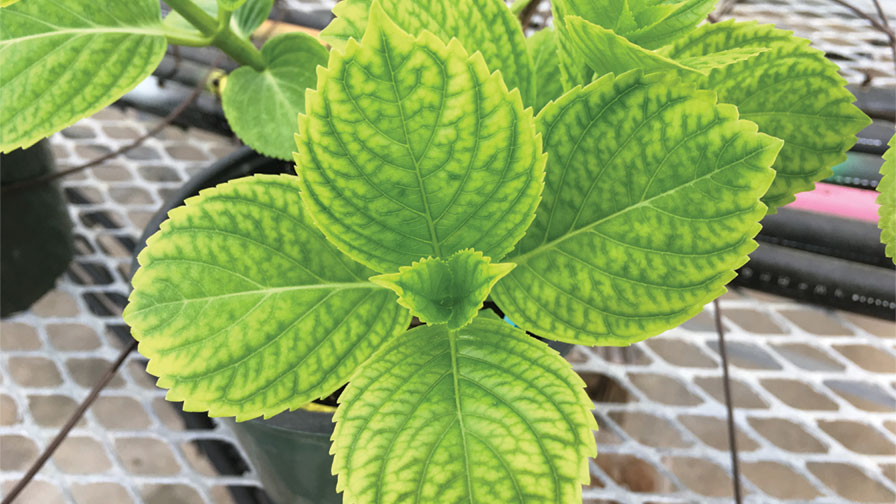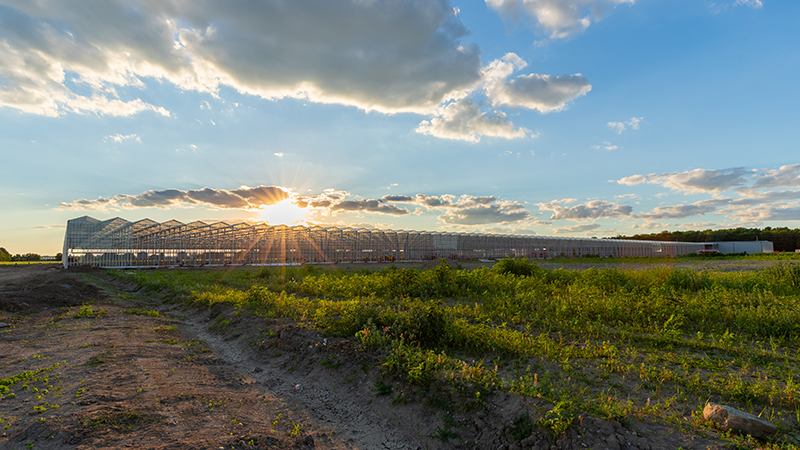The Irony of Overwatering Your Plants

Iron chlorosis in hydrangea
In greenhouse production, interveinal chlorosis of the upper foliage is commonly associated with insufficient iron (Fe) being available to a plant. The most common situation is an Fe deficiency and is initially observed as a light-green coloration of the new upper foliage, progressing to a more pronounced interveinal chlorosis and finally, in severe cases, total yellowing and bleaching of the foliage.
While these symptoms are commonly observed, determining the cause of the disorder requires additional investigation due to the many causes of Fe deficiency. Iron deficiency can be caused by a wide variety of problems ranging from insufficient Fe fertility, high substrate pH, root rot, or overwatering.
In a recent e-GRO alert, Brian Whipker and Patrick Veazie of North Carolina State University outline a recent case of butterfly bush (Buddleja davidii) plants in a greenhouse displaying interveinal chlorosis of the upper foliage. After a warm summer and the start of lower fall temperatures, the irrigation frequency on this group of plants had not been reduced. This led to the plants being overwatered and having highly saturated substrates. After seasonal shifts in the weather, growers should closely monitor irrigation schedules and make changes as needed to prevent constantly saturated substrates that can lead to Fe deficiency and other problems such as root rot.
Substrate composition plays a large role in water retention. If substrate saturation is a continuous problem, growers may consider a substrate with a greater aggregate incorporation rate to help facilitate drainage.
For more information and tips on how to correct iron deficiency, check out the original e-GRO alert here.










